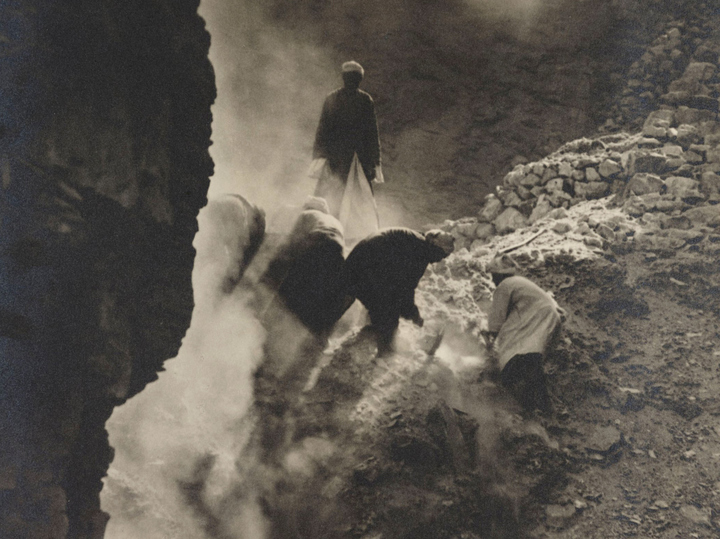The curse of the pharaoh: there is new evidence of the theft of Tutankhamen’s treasures
[ad_1]
Archaeologist Howard Carter, who discovered Tutankhamun’s tomb in 1922, has long been suspected by Egyptians of having appropriated the treasure before the tomb was officially opened. But although rumors have been circulating for generations, finding proof has been difficult.
Now, according to The Guardian, the accusation that Carter was in charge of property “undoubtedly stolen from the tomb” appeared in a previously unpublished letter sent to him in 1934 by a distinguished British scientist from his own excavation team.
This letter was written by Sir Alan Gardiner, a leading philologist whom Carter hired to translate hieroglyphs found in a 3,300-year-old tomb, and later gave him an amulet used for offerings to the dead, assuring him that the artifact was not taken from that tomb.
But Gardiner showed the amulet to Rex Engelbach, then the British director of the Egyptian Museum in Cairo, and was dismayed to learn that it had indeed come from a tomb, as it matched other designs – all made from the same pattern.
When sending a letter to Carter, the scientist attached Engelbach’s accusatory verdict, which read: “The amulet that you showed me was undoubtedly stolen from the tomb of Tutankhamun.”
Gardiner wrote to Carter, “I am deeply sorry to be in such an uncomfortable position.” But at the same time, he added: “Naturally, I did not tell Engelbach that I received the amulet from you.”
The letters, now in a private collection, will be published in an forthcoming Oxford University Press book, Tutankhamun and the Tomb that Changed the World.
Its author, Bob Bryer, a leading Egyptologist at Long Island University, told the Observer that there have long been rumors that Carter was embezzling the treasure: “But now there’s no doubt about it.”
This year marks the 100th anniversary of the discovery by Carter and his financial backer Lord Carnarvon of the boy pharaoh’s tomb, filled with thrones, chariots and thousands of items needed in the afterlife. Over the next decade, Carter oversaw their removal and transportation down the Nile to Cairo for display in the Egyptian Museum.
Some Egyptologists dispute Carter’s claim that the tomb’s treasures were plundered in ancient times. In 1947, in an obscure scientific journal in Cairo, Alfred Lucas, one of Carter’s collaborators, reported that Carter himself had secretly forced the door to the burial chamber before sealing it again and closing the opening.
Bob Brier says: “They were suspected of breaking into the tomb before it was officially opened, removing artifacts, including jewelry, sold after their death. It is known that Carter somehow had some items, and people suspected that he could appropriate them for himself, but these letters are living proof. Of course, he never admitted it. We don’t have a formal objection. But the Egyptian government locked him up in a tomb for a while. There were a lot of bad feelings and they thought he was stealing things.”

In his book, Bob Bryer writes that the Egyptians were unable to prove their suspicions and were convinced, for example, that Carter planned to steal the wooden head of Tutankhamun that they had found: “Egyptian authorities entered and inspected tomb number 1. 4, which Carter and his team used to store antiquities, and found a beautiful life-size wooden head of Tutankhamun. It was packed in a Fortnum & Mason box, but it was never mentioned in Carter’s records of the finds, nor in the volume describing the contents of the vestibule … Carter claimed that she was simply found among the debris in the descending corridor.
Brier states: “We later found items in the Egyptian antiquities market from his estate that clearly came from the tomb.”
Some have gone on to museums, including the Metropolitan Museum of Art in New York, which announced in 2010 that it would send back to Egypt 19 items it acquired between the 1920s and 1940s as they ” can be safely attributed to the tomb of Tutankhamun.
In his 1992 book on Carter, the late Harry James relied on Carter’s letters from the Griffith Institute at Oxford University, alluding to a quarrel with Gardiner that led to the return of the amulet to Cairo.
The significance of the previously unpublished correspondence is that the accusation came from a leading expert who actually took part in the first excavations. Carter would have had a hard time challenging Engelbach, who had “too much power and really knew his stuff,” Brier says.
[ad_2]
Source link








